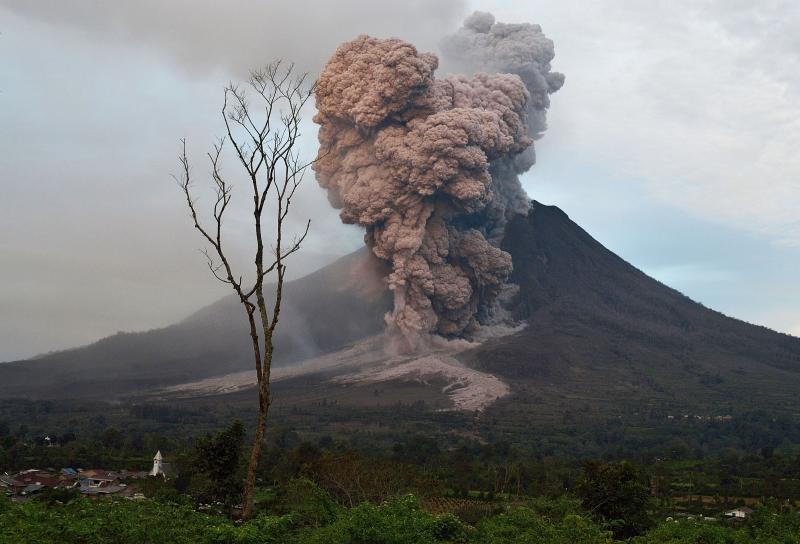Putting our journalistic skills to use, so you get to sound smart.
Indonesia has been hit with another natural disaster and this time it’s in the form of a volcanic eruption. After staying dormant for over 400 years, Mount Sinabung has actively erupted up to a dozen times a day for the last three months, spewing lava and pryoclastic flow (hot clouds of ash, rocks and gases) and engulfing an entire village close to the volcano’s crater.
Where is Mount Sinabung exactly?
It is located within the regency of Karo in the northern part of Sumatra, Indonesia. Standing at 2,460 metres above sea-level, the volcano is situated merely 40 kilometres from Lake Toba, the world’s largest volcanic lake and 271 kilometres from our very own Pangkor Island in Perak.
The fiery mountain
Mount Sinabung is one of the 150 volcanoes in Indonesia and is a composite volcano made of many layers of hardened lava and volcanic ash. Although it has four volcanic craters, only one of them currently active. Like most of the other Indonesian volcanoes, It was created by the subduction (the convergence of two tectonic plates) of the Indo-Australian Plate under the Eurasian Plate.
Any casualties?
It has killed over 15 people so far, mainly curious students and villagers who had ventured up and got caught in the volcano’s pyroclastic flow. Over 30,000 people have been evacuated from the vicinity for safety purposes.
Can we visit Mount Sinabung?
Well, yes but preferably not now. Although some locals do gather in a field about 10km away from the volcano to watch the lava flow at night – it’s a pretty sight, but definitely dangerous nonetheless.
Are we affected?
There is a possibility that the northwesterly winds may blow ashes from Sumatra across the Straits of Malacca and towards Malaysia. According to the Malaysian Meteorological Department, the ashes may affect flight operations and reduce visibility in the southern region of the country. The National Weather Forecast Centre says that the coastal regions of Negri Sembilan, Malacca, and various regions in Johor may also be affected by the ash clouds.


Tell us what you think!